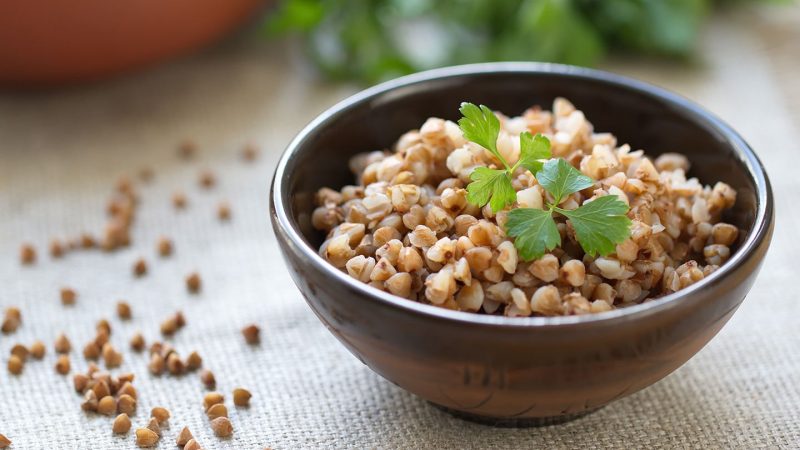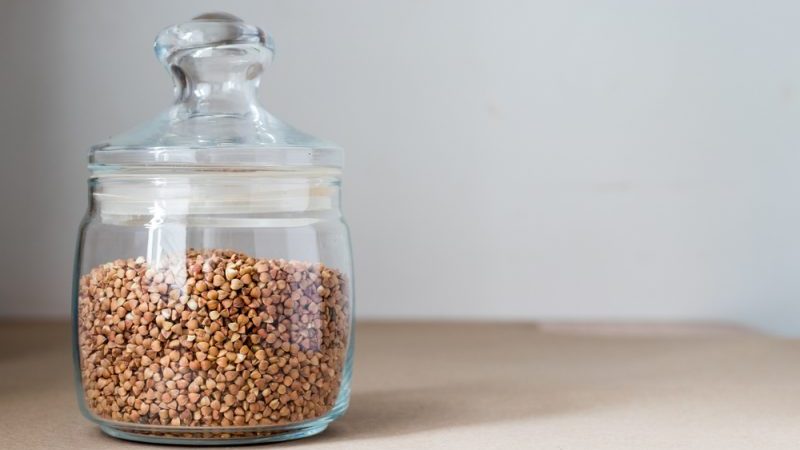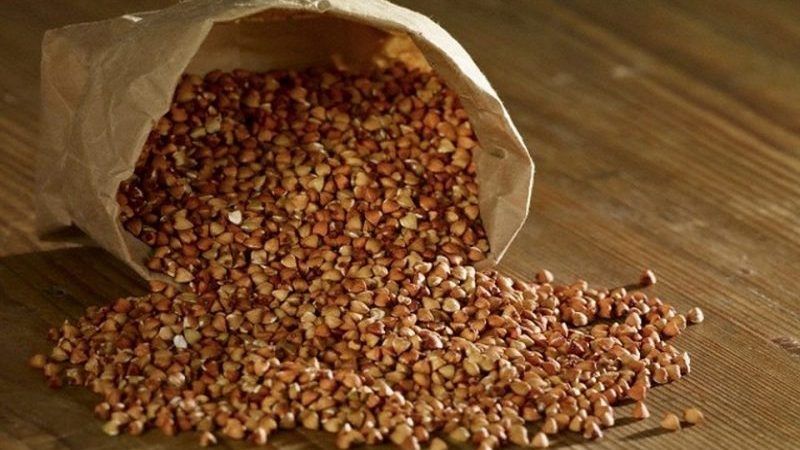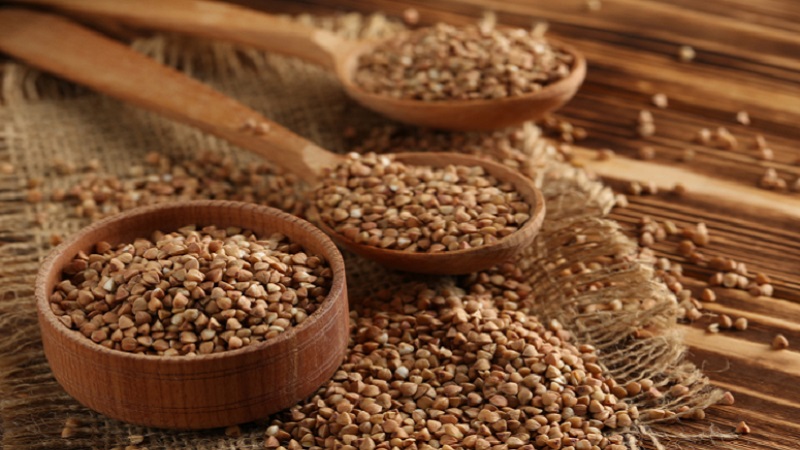What is the shelf life of buckwheat, raw and cooked
Buckwheat is a healthy and nutritious product. It contains protein, fiber, vitamins, macro- and microelements. But the number of useful properties in it decreases with each subsequent day of storage. Therefore, the shelf life of dry and cooked buckwheat is important when using it.
The content of the article
Shelf life of cooked buckwheat
Buckwheat is cooked porridge or add it to other dishes... It is best to eat freshly prepared food. If the porridge is seasoned with oil, milk, vegetables or meat are added to it, it is recommended to eat it in the first hours, as these products reduce the shelf life.
After boiling in water without any additives, buckwheat can be stored in the refrigerator or prepared for future use by sending it to the freezer. We will tell you how long to store porridge and what conditions are needed for this.

In a refrigerator
Buckwheat porridge is stored in the refrigerator for no more than three days at a temperature of + 4 ° C. It is better to transfer it to a container with a tight-fitting lid and take out the desired portion before use. The tightness of the container will not allow the porridge to absorb foreign odors.
In the freezer
Boiled buckwheat can be stored in the freezer compartment of the refrigerator for up to three weeks. The longer the porridge stays in the refrigerator, the less useful properties will remain in it. She will only satisfy the feeling of hunger. Buckwheat is packed in portions in containers or hermetically sealed bags, taken out as needed and heated.
At room temperature
After cooking, the porridge can remain on the table for no more than 4 hours at a temperature of 18 to 22 ° C. In the warmth, pathogenic microorganisms quickly begin to multiply, and it becomes unusable.
Attention! Adding butter, milk, or other ingredients to the porridge will shorten the shelf life. The dish will deteriorate in the heat after 1.5-2 hours.
Optimal storage conditions
Stocking up boiled porridge for future use, adhere to the following recommendations:
- cooked buckwheat can only be stored for a long time in the refrigerator or freezer;
- use dishes with a tight-fitting lid;
- the recommended storage temperature for boiled buckwheat is from +2 to + 4 ° С;
- if you plan keep a week or more, it is better to freeze porridge;
- in the refrigerator, it must be isolated from foods with strong odors (fish, citrus fruits, etc.), as it absorbs odors quickly.
Terms and conditions of dry buckwheat storage

The freshness periods of cooked porridge and dry product differ. Dry retains useful properties longer.
Shelf life of buckwheat depends on its variety, quality, region, packaging. How much each type of cereal is stored is indicated in the GOST.
In closed packaging
Prodel and unground in closed packaging retain their basic properties unchanged for 14 and 15 months in the Far East, North Caucasus and the Lower Volga region and 18-20 months in other regions of Russia, provided they are stored in accordance with GOST: in dry rooms with good ventilation, relative humidity of about 70%, temperature not higher than + 25 ° С.
Groats in a room with high humidity and poor ventilation roll into lumps, which contributes to the formation of mold and mildew.
Attention! The packaging date and expiry date should be stamped on the bag and not on the attached label.
In open packaging or in bulk
After opening the package, buckwheat should be consumed in a few months. If the groats are packaged in a store in bags, it will be difficult to find out the date of opening the manufacturer's packaging. Factory containers could be opened 2-3 months ago, and put into packages anytime.
After opening the factory packaging, buckwheat is stored up to the following indicators:
- unground - up to 4 months;
- done - up to 3 months;
- green buckwheat - no more than 2 months
Places for storing buckwheat are chosen dry, cool and dark. Bright light negatively affects the quality of the product.
How to understand that a product has started to deteriorate

Spoiled buckwheat will not be beneficial and can even harm. But how to understand that porridge or cereal has gone bad? Such conditions will be indicated by characteristic signs. If there is one or more signs, buckwheat in any form should be thrown away; such a product should not be consumed.
Suitability check
Boiled buckwheat spoils quickly when warm. You can determine that the porridge is not suitable for consumption by the sour smell, mucus and mold that has appeared. Groats also spoil under improper storage conditions or after the expiration date. Therefore, before buying and preparing it, you need to inspect it, paying attention to whitish bloom, smell and other changes. The quality of buckwheat is determined by examining a small amount of it.
The following indicators are important:
- color - the grains are covered with a whitish bloom or mold;
- taste - buckwheat tastes bitter if you chew 1-2 grains;
- odor - mustiness and rancidity appear due to the breakdown of fats;
- the groats fall off, forming lumps;
- insects appear - bugs, worms, moths.
These signs indicate that the product is not suitable for food. It's better to throw it away.
Why is it dangerous to eat expired buckwheat
Some people neglect the indicated expiration dates, believing that a slightly stale product will not do much harm. However, buckwheat grains are capable of absorbing and accumulating odors, volatile and toxic compounds. The longer the product is stored, the higher the concentration of harmful substances in it.
Cereals with an expired shelf life will not benefit the body. It is deprived of essential vitamins and minerals. If harmful microorganisms and mold have already wound up in it, the porridge prepared from it will cause poisoning or upset the gastrointestinal tract. Therefore, it is better not to risk your health.
How to extend shelf life

You can extend the suitability of the product at home by slightly drying it in the oven. Then put the cooled cereal in a glass or plastic container with a resealable lid. If you use a linen bag, the cereal will "breathe" in it, which will protect it from mold and musty odors.
If you put 1-2 cloves of garlic or bay leaves in a jar of buckwheat, this will help to avoid damage by insects. A gauze or paper bag of salt will absorb moisture and the cereal will not damp.
Conclusion
The storage time of buckwheat depends on what quality and type it is, dry or boiled. If you follow the storage conditions, the product will not lose its beneficial properties, retain its nutritional value and will be useful. Boiled buckwheat is a perishable product and should be eaten within the first four hours after cooking. If you want to preserve its useful properties as much as possible and extend the shelf life, store cooked buckwheat in its pure form without additives. It can be stored in the refrigerator for up to three days, in the freezer for up to three weeks.
Dry buckwheat can be stored for an average of two years in a sealed package, and after opening - several months. The exact expiration date is indicated on the packaging. If the cereal or porridge starts to spoil, it is better not to eat it.